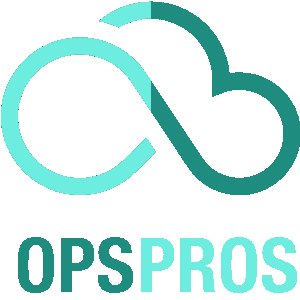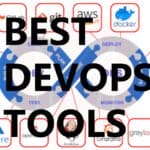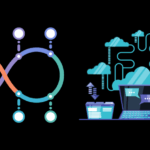Part 1: Pre-2007 – A Perfect Storm of Events
The Influence of Lean Manufacturing
Before the term “DevOps” was coined, the principles that would eventually come to define it were already in play in other industries. Lean manufacturing, often branded as the “Toyota Manufacturing Method,” was a set of best practices aimed at optimizing processes across the manufacturing floor. Inspired by the assembly line methods introduced by Ford Motor Company, Toyota’s approach emphasized continuous improvement—constantly evaluating ways to:
- Minimize Inventory: Raw materials and finished products were kept at a minimum to enhance efficiency.
- Reduce Order-to-Ship Time: Orders were fulfilled as quickly as possible, minimizing the queue of orders.
- Maximize Efficiency: Each operational station, from cutting to welding to assembling, was scrutinized for inefficiencies.
Shifts in IT Practices
In the world of IT, traditional waterfall methods were already giving way to more agile, iterative methods. The emphasis was on speed, even if it sometimes meant compromising on quality. Simultaneously, cloud computing was becoming more mature, particularly in the form of Infrastructure as a Service (IaaS) and Platform as a Service (PaaS). These shifts set the stage for the birth of DevOps.
Emergence of Continuous Integration (CI) Tools
Another critical precursor to DevOps was the development of Continuous Integration (CI) tools. First branded by Grady Booch in 1991, the concept of CI tools was designed to automate the integration of code changes from multiple contributors into a shared mainline several times a day. These tools would later become integral to DevOps practices.
Part 2: 2007-2009 – The Formative Years
Patrick Debois and Agile Infrastructure
Patrick Debois, a Belgian consultant and agile practitioner, was one of the first to recognize the disjointed nature of application development and IT operations. In 2007, while working on data center migrations for a Belgian government ministry, Debois’s role required him to bridge activities between development and operations teams. The lack of cohesion and the numerous walls of separation between these teams planted the seeds of discontent for Debois.

The DevOps Concept Takes Root
In 2008, Debois attended the Agile Conference in Toronto, where Andrew Schafer proposed a “Birds of a Feather” session on “Agile Infrastructure.” Debois was the only person to show up. Despite the initial lack of interest, the two shared ideas that would advance the concept of “agile systems administration.” Later that year, Debois and Schafer formed an Agile Systems Administrator group on Google, though it met with limited success.
The Pivotal Presentation by John Allspaw and Paul Hammond
In 2009, a seminal moment for DevOps occurred at the O’Reilly Velocity Conference. John Allspaw, Senior Vice President of Technical Operations, and Paul Hammond, Director of Engineering at Flickr, presented “10+ Deploys per Day: Dev and Ops Cooperation at Flickr.” The presentation emphasized the importance of seamless, integrated cooperation between development and operations teams for successful software deployment. Their role-playing of typical deployment scenarios, complete with finger-pointing and blame-shifting, underscored the need for DevOps practices.
Watching the presentation via video stream, Patrick Debois was inspired. Encouraged by others on social media, he organized his own conference, Devopsdays, in Ghent, Belgium. By this point, the term “DevOps” had officially entered the lexicon.
3. 2009: The Case for Dev and Ops Cooperation
In 2009, the seeds planted by early discussions on Agile Infrastructure began to bloom. A pivotal moment arrived during the O’Reilly Velocity Conference, hosted in the technology hub of San Jose, California. This conference, dedicated to web performance and operations, became the stage for a groundbreaking presentation by John Allspaw and Paul Hammond, both of whom were engineers at Flickr. Their presentation, entitled “10+ Deploys per Day: Dev and Ops Cooperation at Flickr,” has since achieved legendary status within the IT community.
The presentation was more than a technical talk; it was a dramatic exposition of the friction and dysfunction often present between development (Dev) and operations (Ops) teams. Utilizing a role-playing format, Allspaw and Hammond demonstrated the typical blame game: developers blaming the operations team for infrastructure issues, and ops blaming developers for poorly written code. This scenario resonated deeply with many in the audience, who recognized the familiar and frustrating dynamic.
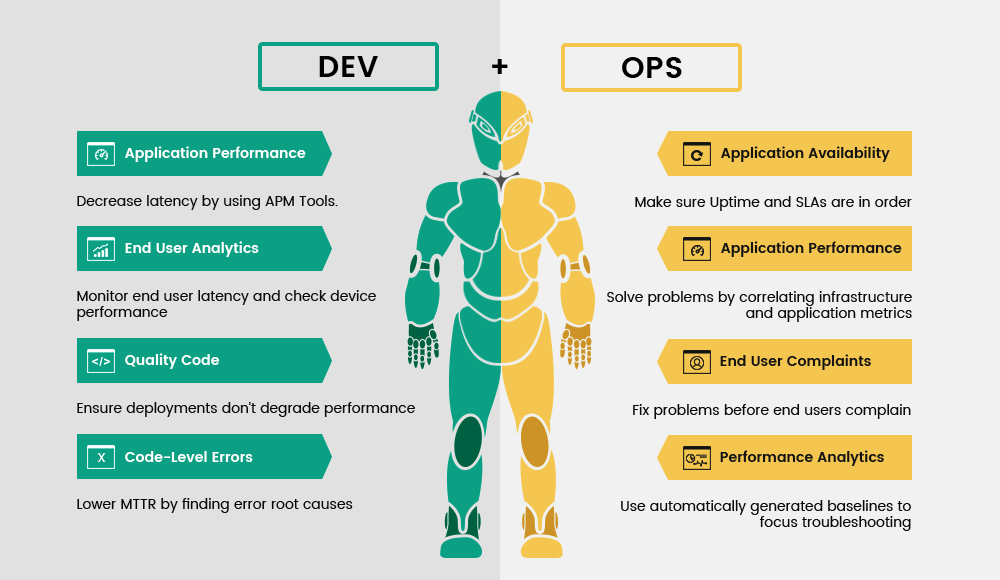
However, it wasn’t just a critique; it was a call to action. Allspaw and Hammond argued that the only viable path forward was seamless collaboration between Dev and Ops. They showcased how Flickr achieved this by integrating development and operational processes, allowing them to deploy code over ten times a day. This approach was revolutionary, indicating that frequent, smaller releases were not only possible but also beneficial in reducing risk and improving the overall quality of the software.
Patrick Debois, who had been frustrated with the divide between development and operations in his own career, found himself deeply inspired by this presentation. Though he could not attend the conference in person, Debois watched the talk via video and began to see a solution to the issues he had been grappling with. This inspiration soon led to action as he initiated the first Devopsdays conference in Ghent, Belgium. This event marked the official introduction of the term “DevOps” to the IT lexicon.
The case made by Allspaw and Hammond helped frame the DevOps movement as a necessary evolution in software development and IT operations. Their work underscored the importance of collaboration, shared responsibility, and the breaking down of silos to improve both speed and quality in software delivery. This presentation did not just inspire Debois but also catalyzed a series of discussions and meetups worldwide, setting the stage for the global adoption of DevOps principles.
4. 2010: DevOps comes to the United States
Following the momentum from the initial Devopsdays in Belgium, the movement made its way to the United States in 2010. This transition was marked by the first Devopsdays conference held in Mountain View, California, timed to coincide with the annual O’Reilly Velocity conference. The U.S. debut was crucial; the Silicon Valley setting provided a fertile ground for the DevOps ideology to take root among a tech-savvy audience already familiar with the challenges highlighted by Allspaw and Hammond.
The 2010 U.S. conference saw an outpouring of interest and engagement from a community eager to dismantle longstanding barriers between development and operations teams. It included a mix of talks, open spaces, and discussions that allowed participants to share their own experiences and insights, furthering the collaborative spirit that DevOps champions. This event was not just a conference but a rallying point, generating a groundswell of support for DevOps principles.
The concept of DevOps quickly spread across the United States, with various companies beginning to experiment with and adopt DevOps practices. Tech giants like Google, Amazon, and Netflix, which were already pioneers in continuous delivery and integration, started to formalize their practices under the DevOps umbrella. These companies demonstrated the benefits of DevOps at scale, including increased deployment speeds, improved system stability, and faster recovery times.
The rapid adoption in the U.S. was also facilitated by the burgeoning toolset designed to support DevOps practices. Tools like Jenkins for continuous integration, Puppet and Chef for configuration management, and later Docker for containerization, provided the technological scaffolding necessary for DevOps to thrive. These tools automated many of the repetitive tasks that had traditionally fallen into the cracks between development and operations, freeing teams to focus on more strategic work.
The DevOps movement in the United States also influenced academia and industry standards. Universities began incorporating DevOps principles into software engineering curricula, and DevOps certifications started to gain traction, further professionalizing the field. Moreover, industry groups and standards organizations began to recognize DevOps as a critical component of modern software development, leading to formalized practices and guidelines.
In conclusion, the year 2010 marked the beginning of DevOps’ widespread adoption in the United States. The first Devopsdays in Mountain View ignited a passion for change that spread across industries and organizations. The collaborative ethos of DevOps, supported by a robust ecosystem of tools, transformed how software was developed and deployed, laying the groundwork for the continuous improvement mindset that defines DevOps today.
As the movement continues to grow, it remains a testament to the power of cooperation and the relentless pursuit of efficiency and quality in software engineering. DevOps is not just a set of practices but a cultural shift that has permanently altered the landscape of IT and software development.
5. 2013: ‘The Phoenix Project’
In 2013, the publication of “The Phoenix Project” by Gene Kim, Kevin Behr, and George Spafford marked a significant moment in the DevOps movement. This book, though fictional, created a compelling narrative around the principles of DevOps and lean manufacturing, casting light on the integration of development and operations within IT organizations.

A Fictional Tale with Real-World Implications
“The Phoenix Project” centers around Bill Palmer, an IT manager tasked with rescuing a critical e-commerce project at Parts Unlimited. The project, dubbed “The Phoenix Project,” is on the brink of failure, entangling the company in significant financial and reputational risk. Palmer’s journey is guided by a mysterious mentor who introduces him to the concepts of lean manufacturing—principles that had revolutionized manufacturing industries by emphasizing efficiency, waste reduction, and continuous improvement.
Introducing DevOps to a Broader Audience
What makes “The Phoenix Project” so influential is its ability to translate complex DevOps practices into relatable, real-world scenarios. Through the struggles and triumphs of Palmer and his team, readers are exposed to the systemic issues plaguing traditional IT environments—silos between development and operations, inefficient workflows, and a lack of communication and collaboration.
The book highlights how DevOps practices can address these issues, demonstrating the benefits of continuous integration, continuous delivery, and a culture of collaboration and accountability. This narrative resonated with a wide audience, not just within the IT community but also among business leaders who recognized the potential for DevOps principles to drive organizational transformation.
Real-World Applications and Inspiration
“The Phoenix Project” did more than just tell a story; it served as a blueprint for many organizations embarking on their DevOps journeys. Its lessons have been applied across various industries, inspiring IT managers and executives to rethink their approaches to software development and operations.
The book’s success also spurred the publication of related works, including “The DevOps Handbook,” co-authored by Gene Kim, which offers a more detailed guide to implementing DevOps practices. Together, these publications have cemented their place in the DevOps canon, continuing to influence and educate new generations of IT professionals.
6. Widespread Adoption and Cloud Tooling
As DevOps principles gained traction, the landscape of IT and software development began to transform dramatically. The widespread adoption of DevOps practices was catalyzed by the rise of cloud computing technologies and the development of sophisticated cloud tooling.
The Cloud Computing Revolution
Cloud computing had already started to reshape IT infrastructure by offering scalable, on-demand resources. Services like Infrastructure as a Service (IaaS) and Platform as a Service (PaaS) allowed organizations to deploy applications rapidly without the constraints of physical hardware. This flexibility was a natural fit for the DevOps ideology, which emphasizes speed, agility, and responsiveness.
Key players like Amazon Web Services (AWS), Microsoft Azure, and Google Cloud Platform (GCP) began to offer services that specifically supported DevOps practices. These included:
- Elastic resources: Enabling dynamic scaling of infrastructure aligned with the principles of continuous deployment.
- Automated provisioning: Utilized tools like AWS CloudFormation, Puppet, Chef, and Ansible to automate the setup and configuration of environments.
- Continuous Integration/Continuous Deployment (CI/CD): Services such as AWS CodePipeline, Azure Pipelines, and Google Cloud Build facilitated automated testing and deployment, reducing manual intervention and increasing reliability.
The Emergence of Containerization and Orchestration
Another major milestone in the widespread adoption of DevOps was the emergence of containerization technologies like Docker. Containers provided a lightweight, portable means to run applications consistently across different environments, eliminating the “it works on my machine” problem.
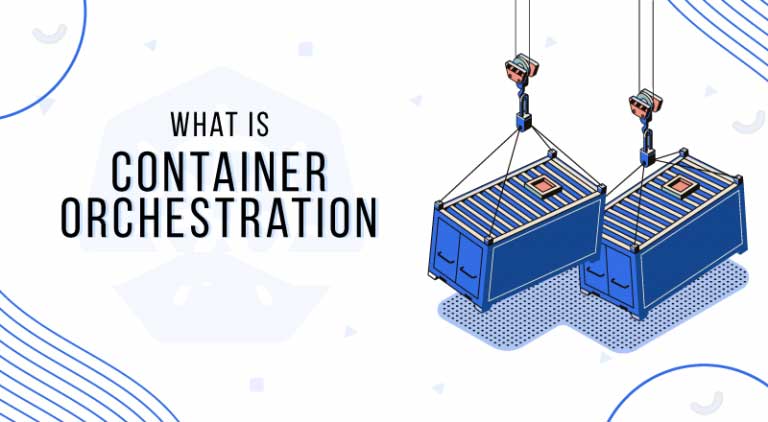
The introduction of Kubernetes, an open-source container orchestration platform, revolutionized how organizations managed containerized applications. Kubernetes automated many aspects of application deployment, scaling, and operations, making it easier to implement DevOps practices at scale. Its ability to manage clusters of containers allowed for greater efficiency and resource optimization, aligning perfectly with the DevOps goals of continuous improvement and operational excellence.
Integrating Security: DevSecOps
As DevOps practices matured, there was a growing recognition of the need to integrate security into the development lifecycle, leading to the evolution of DevSecOps. This approach emphasizes the importance of incorporating security practices early and continuously throughout the development process, rather than treating security as an afterthought.
DevSecOps leverages automation to enforce security policies and conduct regular security assessments, aiming to create a culture where security is everyone’s responsibility. This integration ensures that applications are secure by design and that vulnerabilities are addressed promptly, maintaining the balance between speed and safety.
The Role of Automation and AI
The evolution of DevOps has increasingly been driven by advances in automation and artificial intelligence (AI). Automation tools are now capable of handling complex tasks with minimal human intervention, enabling organizations to achieve higher levels of efficiency and consistency.
AI and machine learning are being incorporated into DevOps practices to predict potential issues, optimize resource usage, and enhance decision-making processes. AI-driven analytics can provide insights into application performance, user behavior, and operational metrics, allowing teams to proactively address bottlenecks and improve the user experience.
7. DevOps for the Future
The evolution of DevOps has been nothing short of transformative for the field of IT and software development. As we look towards the future, the principles and practices of DevOps will continue to shape the landscape of technology.
Continuous Improvement
DevOps is inherently a journey, not a destination. Just as lean manufacturing focuses on “continuous improvement,” DevOps thrives on the perpetual enhancement of processes. This philosophy demands constant reassessment and refinement of workflows to bolster efficiency, speed, and output quality.
Automation and Tooling
One of the core tenets of DevOps is the extensive use of automation. Automated tools have evolved significantly since DevOps’ inception, aiding in everything from continuous integration and deployment to monitoring and security. As these tools become more sophisticated, they will continue to reduce manual intervention, thus minimizing human error and speeding up the development cycle.
Emerging Tools and Technologies
Cutting-edge tools like infrastructure as code (IaC), container orchestration platforms (e.g., Kubernetes), and serverless computing are set to become even more integral. These technologies not only streamline operations but also bring a new level of resilience and scalability to IT systems. As these tools mature, they will further drive the principles of DevOps into mainstream adoption.
Cultural Shifts
The future of DevOps will also see more significant cultural shifts within organizations. The DevOps ethos promotes a culture of collaboration between development and operations teams—breaking down silos that traditionally separated these functions. This cultural shift aligns closely with the broader movement towards Agile and Lean methodologies, fostering an environment where innovation can flourish.
Collaboration and Shared Responsibility
In the coming years, organizations will work towards more profound cultural transformations that embed DevOps principles across all aspects of their operations. This transformation includes shared responsibility for delivering value to customers, fostering a culture of continuous learning, and encouraging innovation at every stage of the development lifecycle.
Continuous Deployment and Delivery
One of the ultimate goals of DevOps is to achieve continuous deployment (CD)—the ability to deploy changes to production rapidly and reliably without manual intervention. As practices and tools advance, continuous deployment will become the norm rather than the exception. This shift will allow organizations to bring new features and fixes to market faster, ensuring they can respond swiftly to changing customer needs and market dynamics.
Beyond IT: DevOps in Other Domains
While DevOps originated within the realm of software development and IT operations, its principles are increasingly being applied to other domains. Concepts like DataOps, MLOps, and BizDevOps are emerging as organizations recognize the value of these practices in areas like data analytics, machine learning, and business operations. The core DevOps principles of automation, collaboration, and continuous improvement can bring significant benefits to these fields, driving innovation and efficiency across the board.
Security Integration
Security is becoming an integral part of the DevOps lifecycle, giving rise to practices like DevSecOps. Future DevOps practices will prioritize integrating security measures seamlessly into the development pipeline, ensuring that security is not an afterthought but a fundamental aspect of the entire process. This shift is essential as cyber threats continue to evolve and become more sophisticated.
Scaling DevOps Across the Enterprise
As DevOps matures, organizations will face the challenge of scaling these practices across larger and more complex enterprises. This scaling involves not just technology and tools but also the cultural and organizational changes needed to support widespread adoption. Companies will need to invest in training, change management, and leadership to ensure that DevOps principles can be effectively implemented across diverse teams and departments.
Final Thoughts

The future of DevOps is bright, with endless possibilities for innovation and improvement. As organizations continue to embrace the principles of DevOps, they will unlock new levels of efficiency, collaboration, and agility. The journey of DevOps is one of continuous evolution, always striving for better, faster, and more reliable ways to deliver value to customers. As we look ahead, the promise of DevOps offers a compelling vision for the future of technology and business.
Noah is an accomplished technical author specializing in Operations and DevOps, driven by a passion ignited during his tenure at eBay in 2000. With over two decades of experience, Noah shares his transformative knowledge and insights with the community.
Residing in a charming London townhouse, he finds inspiration in the vibrant energy of the city. From his cozy writing den, overlooking bustling streets, Noah immerses himself in the evolving landscape of software development, operations, and technology. Noah’s impressive professional journey includes key roles at IBM and Microsoft, enriching his understanding of software development and operations.
Driven by insatiable curiosity, Noah stays at the forefront of technological advancements, exploring emerging trends in Operations and DevOps. Through engaging publications, he empowers professionals to navigate the complexities of development operations with confidence.
With experience, passion, and a commitment to excellence, Noah is a trusted voice in the Operations and DevOps community. Dedicated to unlocking the potential of this dynamic field, he inspires others to embrace its transformative power.
